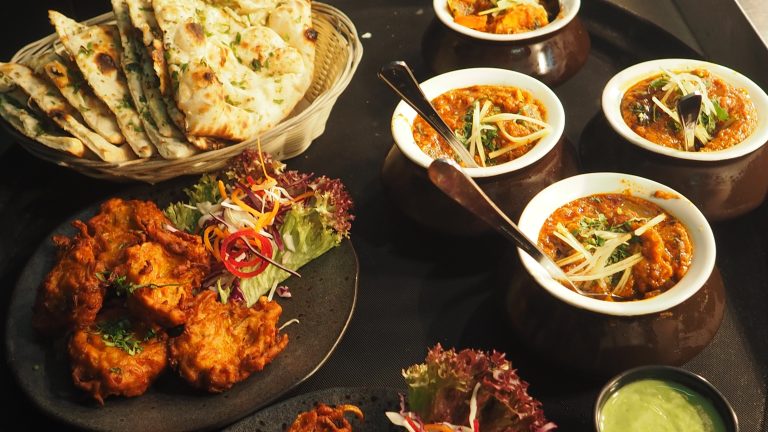
Traditional Dishes and Traditional Dances of Latin Americans
27 June, 2023Traditional foods and dances are abundant throughout Latin America, each one showcasing the region’s diverse cultures and rich heritage. These aspects of Latin American identity—from savory foods to rhythmic dances—offer a window into the rich tapestry of the region’s traditions. They are all fundamental to the culture.
The flavors and ingredients used in traditional dishes throughout Latin America range greatly from one nation to the next. Let’s examine some well-known dishes from various regions of Latin America.
Mexican food staple tacos are now well-known worldwide. These tortilla-based dishes are frequently stuffed with a variety of ingredients, such as seasoned meats (such as beef, pork, or chicken), grilled vegetables, cheese, salsa, and guacamole.
Brazil’s national dish is feijoada, a hearty and flavorful black bean stew typically made with pork, beef, and various sausages. Farofa (toasted manioc flour) is frequently served with it, along with rice and collard greens.
Ceviche (Peru): Though it is popular throughout Latin America, ceviche is a light seafood dish that was first made in Peru. It typically consists of raw, fresh fish or seafood that has been marinated in citrus juices like lime or lemon and spiced with herbs, onions, and chili peppers. Citrus juice’s acidity “cooks” the fish, giving it a tangy and zesty flavor.
Asado (Argentina): Asado is a type of traditional barbecue that has been incorporated into the national cuisine. Various beef cuts, sausages, and other meats are grilled over an open flame in this process. As a result, the meat is succulent and flavorful. It is frequently served with chimichurri sauce and is accompanied by grilled vegetables and salads.
A common breakfast dish made with rice and beans is called gallo pinto (Costa Rica and Nicaragua). It typically has a savory and aromatic flavor from being cooked with onions, garlic, and spices. Frequently, eggs, fried plantains, and a side of sour cream are served with gallo pinto.
Regarding traditional dances, Latin America is the home to a wide variety of vivacious and rhythmic dances that capture the region’s vibrant spirit and cultural heritage. These are a few illustrative examples.
Salsa (Cuba): Salsa is a vivacious and sensual dance that originated in Cuba and has since spread throughout Latin America and the rest of the world. In addition to jazz and other influences, it incorporates elements of Caribbean and Afro-Cuban dances. Intricate footwork, fluid movements, and lively partner interactions are hallmarks of salsa.
Tango (Argentina and Uruguay): The Ro de la Plata region is where the elegant and passionate tango was born in the late 19th century. It is renowned for its close embrace, deft footwork, and expressive facial expressions. Tango is frequently performed to the melancholy sounds of the bandoneón, a type of accordion, and has come to represent Argentine culture internationally.
Brazil’s energetic dance known as samba captures the country’s joyous and vibrant spirit. Fast footwork, hip movements, and vibrant costumes are its defining features. Samba is a prominent element of Brazil’s celebrated Carnival celebrations, where dancers exhibit their talents in elaborate parades. Before the carnival celebrations, the favorites of fortune can test their dexterity and intelligence while playing Play Amo games.
Merengue: Merengue is a lively, quick-moving dance that has its roots in the Dominican Republic. It incorporates aspects of native, European, and African influences. Merengue is a fast-paced dance style distinguished by coordinated hip and foot movements. Upbeat, lively music is frequently used as a background.
Cueca (Chile): The national dance of Chile, cueca, is a significant component of its cultural heritage. Dancers perform this vivacious dance in pairs while dressed traditionally. In cueca, partners engage in flirtatious interactions while imitating the courtship rituals of a rooster and hen.
Just a small portion of Latin America’s diverse culinary and cultural heritage can be seen in these traditional foods and dances. Latin American cuisine and dance are a vibrant tapestry of flavors and movements that continue to enthrall and delight people all over the world. Each country within the region has its own distinct variations and specialties.
Follow Sounds and Colours: Facebook / Twitter / Instagram / Mixcloud / Soundcloud / Bandcamp
Subscribe to the Sounds and Colours Newsletter for regular updates, news and competitions bringing the best of Latin American culture direct to your Inbox.

